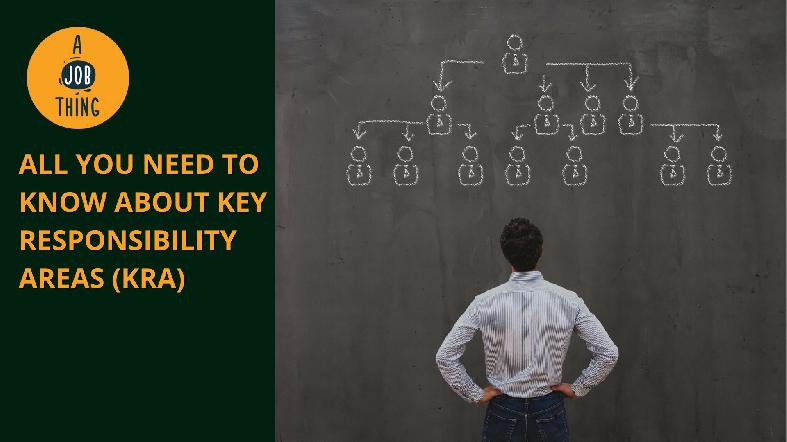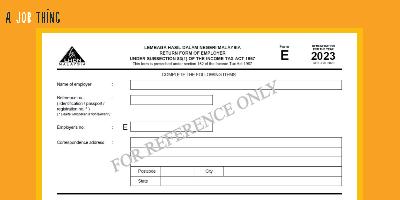
All You Need to Know About Key Responsibility Areas (KRA)
Create Job Description Using AI
Write appealing job descriptions for any job opening to attract the most qualifield and suitable candidates. FOR FREE.
try now
Key Responsibility Areas or KRA is defined as a detailed summary of what an employee is supposed to work on. They are necessary for achieving the company's targets.
It is a complete statement of what employees should do, how they should do it, and how the organisation will measure these goals. It gives employees a clearer idea of their duties and responsibilities and gives them a sense of direction while working.
They are then followed by the job description and a list of goals. These goals are specific to employees' positions in the organisation. The purpose of KRA is to give employees a clear understanding of their job.
What is included in a KRA?
KRAs define the role of a team member. It describes the key roles and responsibilities related to the job profile. It is well-defined, easy to quantify and helps employees focus on their roles and perform better.
Since the roles and duties of an employee are specified, it allows individuals to match their ambitions to the organisation's goals. This procedure assists in the productivity of the organisation. It also helps the management in keeping track of the staff's performance. Thus, KRA is crucial for the company's performance.
How a proper KRA is structured
A well-defined KRA explicitly describes the role of any employee's job profile.
The first stage of a well-defined KRA is establishing the organisation's KPI (Key Performance Indicator), a vital area for employee contribution. However, not all KPIs apply to every employee.
Another critical aspect is the description of relevant responsibilities of employees based on their job roles. Different work responsibilities may apply to the same job role. Therefore, it is vital to document all of them.
The categorisation of expectations from an employee is broken into two parts:
-
Measurable: Achievements that can be quantified, such as the number of new hires, training sessions completed, revenue increase, etc.
-
Immeasurable: Achievements that cannot be measured, such as brand value, productivity, etc.
The organisation's aim should be communicated articulately. It should have a measurable goal and a realistic time frame.
Discussion of goals with the employee and their acceptance is also necessary.
The expectations and goals should be reviewed quarterly, and when the organisational goals change, the personnel goals should also be adjusted.
Examples of KRA
KRA is concerned with the roles and responsibilities of employees and teams. Every job profile has a unique KRA.
1. Sales Manager
A sales manager is in charge of directing and leading a sales team in an organisation. They set goals, build a plan, analyse data, and assign tasks to fellow sales representatives. The KRAs for sales managers include:
-
Increasing net revenue from the previous quarter.
-
Increasing online sales ratio to other sales.
-
Improving sales contacts per salesperson
-
To increase sales of the prior quarter.
2. Product Manager
The product manager handles product planning and product marketing. They ensure that the product and services meet the customers' needs. Their primary function is to assess whether the product supports the company's overall strategy and aims. The KRAs for a Product Manager are:
-
Increasing revenue from the product compared to the previous quarter.
-
Bring in new customers for the product
-
Ensuring customer stability, which is the customers buying and using the product.
-
Ensure customer satisfaction.
3. Project Manager
A Project Manager plans, executes, monitors, regulates and closes a project. They handle the project scope, budget estimates, and the success or failure of the project. The KRAs for a Project Manager are:
-
Complete the project within the estimated budget.
-
Completing the project on time
-
Improve cost forecasting for project components.
4. HR Manager
A Human Resource Manager plans, manages and oversees the administrative tasks of a business. They build a link between the organisation and employer, monitor the hiring and recruiting process, verify administrative work, examine the company's regulations, govern employees' benefits, etc. The KRA for an HR Manager are:
-
Recruiting qualified candidates for job openings.
-
Finding qualified candidates.
-
Increase rate of job offer acceptance.
-
Decreasing HR expenditures per new hiring
-
Decreasing employee turnover.
5. IT Manager
An IT Manager is accountable for achieving the organisation's information systems requirements. An IT Manager is in charge of all computer-related activities, including coordination and planning. The primary responsibility is to manage the organisation's network and infrastructure, ensure the security of the organisation's computer systems and data, communicate with other departments regarding any issues, and monitor the company's network systems daily. The KRAs of an IT Manager are:
-
Improving efficiency in addressing and resolving the user problems
-
Increasing employee satisfaction through the use of technology operations.
-
Ensuring the network system is always operational.
KRAs are critical to the company's success. If a KRA is set for a specific employee, it means that they are solely responsible for completing the task against which their performance will be measured. It gives employees a clearer picture of the goals that they must meet. An employee's KRA is aligned with the team, which aligns with the organisational goals.





